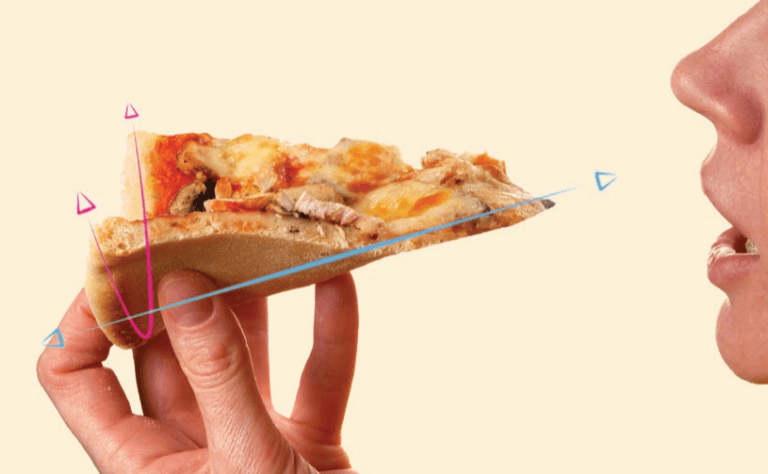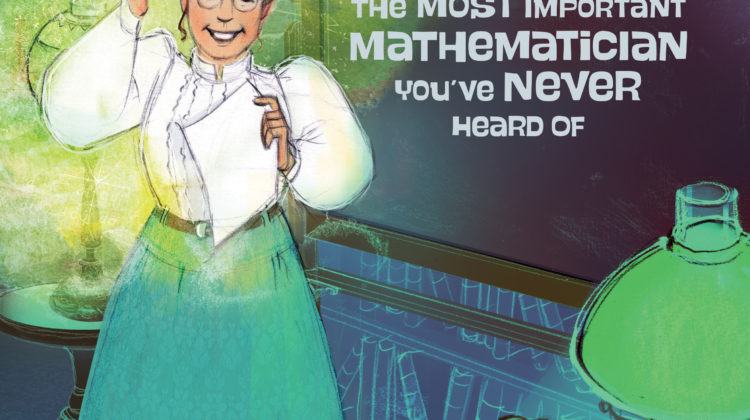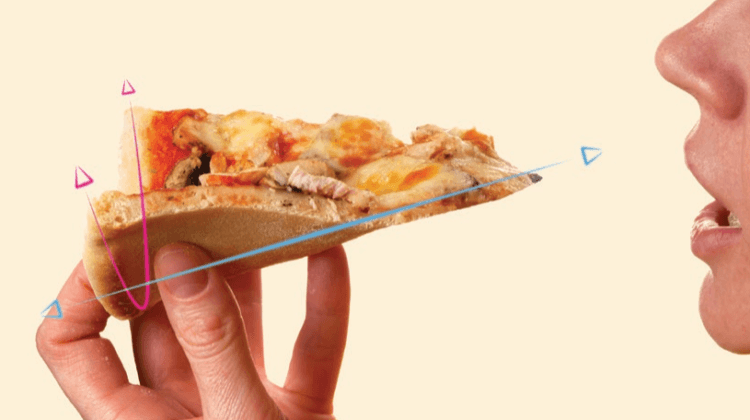The physics of eating pizza the proper way
Never let your toppings take the plunge from a droopy slice again.

When eating a loaded, ooey-gooey slice of pizza, you may find the tip drooping toward the floor like a particle into a potential well.
To counteract that, we recommend something the foodie scientists at Serious Eats have dubbed “The Fold Hold.” Bending the crust end of the pizza into an arc keeps the pointed end from pointing down.
But why? How can introducing a bend in one axis create rigidity in the other axis? Physicists (and probably only physicists) will not be surprised that the mysterious stiffness of folded pizza answer involves a foundational result in differential geometry: Gauss’ “Remarkable Theorem” (he really called it that).
The Remarkable Theorem says that if you take a surface (or a piece of pizza) and bend it without stretching or tearing it, its Gaussian curvature stays the same. What’s Gaussian curvature? It’s a little complex to define when your hands are covered with cheese grease, but basically it’s the number you get when you multiply the curvature of one axis together with the curvature of the other axis. Sheets and tubes have a Gaussian curvature of zero, spheres and eggs have a positive curvature, and saddles and Pringles chips have a negative curvature.
Thus, if you bend your pizza in one axis, the other axis has to stay straight – at zero curvature – so that the Gaussian curvature stays at zero. Or you could order panzerotti.























































































